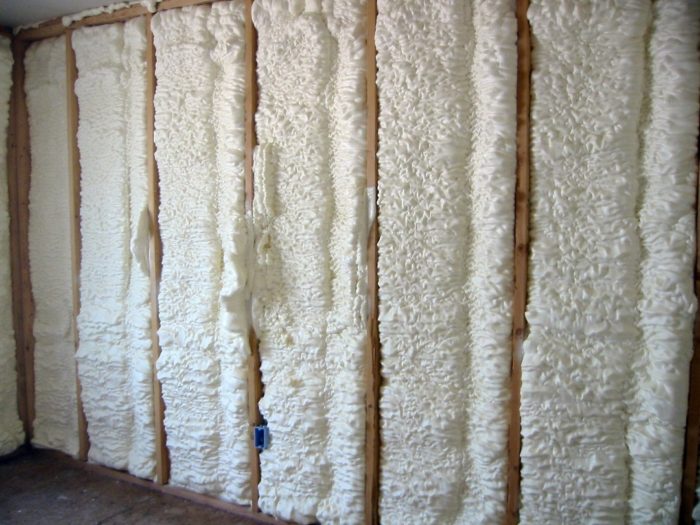
A measure signed into law by California Gov. Jerry Brown will require state officials to review California’s flammability standards for foam insulation, and may ultimately reduce the exposure of homeowners to two common flame retardants.
According to an article posted online at SFGate.com, the state fire marshal and the Building Standards Commission will review current flammability standards and consider whether flame retardants are necessary.
The law doesn’t amount to an outright ban on the chemicals, but it could lead to a change in state building standards that “would discourage the use” of two potentially hazardous retardants, HBCD and TCPP, the report said.
The measure was supported by the U.S. Green Building Council, firefighters from around the state, and health advocacy grounds including the Natural Resources Defense Council, SFGate reported.
Use of flame retardants is widespread
Flame retardants are added to all types of plastic insulating foam, according to a blog written by Alex Wilson and posted here at Green Building Advisor in January.
HBCD, which is added to extruded and expanded polystyrene insulation, and TCPP, which goes into most polyisocyanurate and spray polyurethane insulation, are both “halogenated” chemicals, Wilson says, and both “have significant health and environmental risks.”
The Stockholm Convention on Persistant Organic Pollutants has targeted HBCD for phaseout internationally, Wilson wrote, adding, “It is highly persistent in the environment and bioaccumulative in the food chain; it is believed to cause reproductive, developmental, and neurological impacts.”
Less is known about TCPP.
Do we really need these chemicals in insulation?
While the purpose of adding flame retardants to insulation is obvious, Wilson reported that thermal barriers protecting the insulation, such as 1/2-inch thick gypsum drywall, are much more effective at promoting safety than the chemicals themselves.
He added that removing the chemicals from foam might be an attractive option for manufacturers because it would reduce costs. He said efforts were underway to allow foam without the retardants be used in applications where the foam was protected by a thermal barrier. One such instance would be where XPS foam is installed below grade.
Arlene Blum, a Bay Area chemist and activist, has suggested the retardants may not be necessary because of fire-safety codes that are already in place, SFGate reported, but an industry group doesn’t seem eager to stop using the retardants.
“Flame retardants in foam insulation serve a vital role in fire safety and provide an important layer of protection to people, homes and buildings,” the report quoted the Energy Efficient Foam Coalition as saying.
Exposure to flame retardants is a widespread problem affecting many more products than foam insulation, according to published reports. For example, the retardant TDBPP was banned from children’s pajamas in 1977 but was still allowed in other products, and it can be found in one-third of all couches in the country, according to an article in Forbes.
Separately, a study of dust collected in California homes in 2006 and 2011 found dozens of retardant chemicals.
Weekly Newsletter
Get building science and energy efficiency advice, plus special offers, in your inbox.














3 Comments
Correction
Be careful when you read the words "discourage the use" of fire retardants above and in the SFGate article linked above. Proposed changes to CA building codes and ICC codes in general would simply allow people to choose, which they can't do today. If Calif. and/of ICC adopt the changes, fire retardant in spray foam that's behind gypsum board or other approved thermal barrier in homes will be optional. Even if CA and/or ICC adopt the proposals, spray foam containing fire retardants will still be available on the market because it will still be required in other applications. This becomes clearer if you read the quote from the bill's author that is in the SFGate article. It's perfectly clear in the existing proposal to change the code, which is at http://saferinsulation.org/wp-content/uploads/2013/09/Published-Proposals-and-Public-Comment-RB163-and-RB164.pdf
Also, I hope to hear what if anything happened at the public hearing for the proposed code change which I understand occurred Oct 4 in Atlantic City at the IRC-B meeting http://www.iccsafe.org/cs/codes/Documents/2012-2014Cycle/PCH/PCH-Schedule-2013.pdf
Fire retardant foam and fire sprinklers?
Thank you Governor Brown. Hmmm let me think...the same year fire sprinklers are required statewide for new residential construction is the same year the fire retardant was required for the foam. Doesn't make much sense. Why would firefighters want this eliminated from foam? After a structure fire high amounts of VOC's are emitted hours and days after a fire. Firefighters are in the house hours after the fire has been extinguished putting out embers, turning debris over to locate hot spots, pulling material out for salvage, conducting an investigation, often without the use of a SCBA tank. High rates of exposure to airborne chemicals occurs during this period.
IRC-B
Michael:
I've looked into this, and had conversations with "The Safer Insulation Solution", the name of the group Alex is a part of. They are trying to get these chemicals out via the code, or at the very least, allowing the use of foam without retardants. The ICC hearing committee in Dallas did not accept their proposal, and the the code officials in Atlantic City voted the same way.
In my opinion, it's a wave that's coming to the industry at some point. As the article states, the Stockholm Convention is banning it in over 100 countries. There is extra time given to residential applications, to allow larger manufacturers time to figure out a way to make a non-retardant product. But this, in concert with the anti-chemical movement in LEED, will bring change. Ultimately, I haven't seen evidence yet of a legit reason to prevent the use of non-retardant foam, but I will say there is a strong lobby out there for keeping the status quo.
Log in or create an account to post a comment.
Sign up Log in